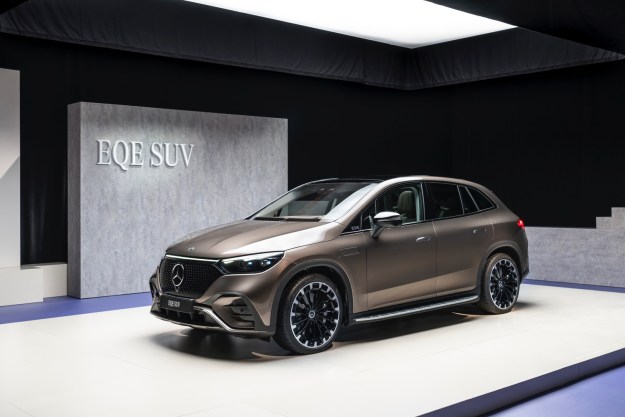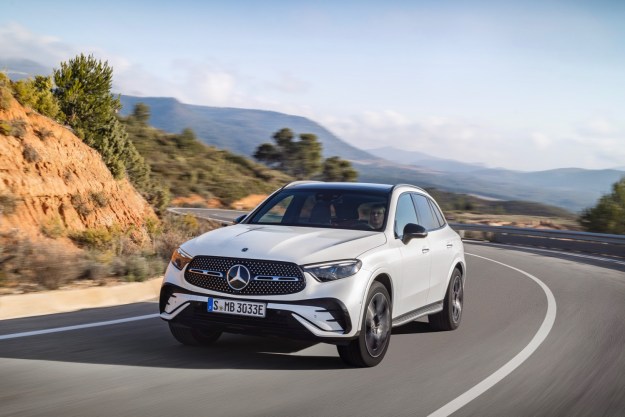The Mercedes-Benz C-Class lineup is going green with the addition of a new model called C350 Plug-In Hybrid that will be presented at the Detroit Motor Show.
The C350 benefits from the gas-electric technology that was developed for the range-topping S-Class. Its hybrid drivetrain consists of a turbocharged 2.0-liter four-cylinder engine and an electric motor integrated into a hybrid-specific seven-speed automatic transmission. Electricity is stored in a 220-pound water-cooled lithium-ion battery pack that can be recharged via a regular household outlet, through a wallbox or by simply using the energy that is generated while braking.
The two power sources generate a combined output of 275 horsepower and 443 foot-pounds of torque, enough to send the C350 from zero to 60 mph 5.9 seconds and on to a top speed of 130 mph. Alternatively, the C350 can drive on electricity alone for 20 miles at speeds of up to 80 mph.
The driver can select four operating modes called Hybrid, E-mode, E-save and Charge, respectively. In hybrid mode the C350 uses both the electric motor and the turbo four to return the highest possible gas mileage. E-mode relies exclusively on the electric motor, while E-save mostly uses the four-cylinder in order to save the battery’s charge for later. As its name implies, Charge mode runs exclusively the combustion engine while recuperating kinetic energy to charge the battery pack on the go.
Drivetrain aside, the C350 Plug-In Hybrid is nearly identical to the non-hybrid model inside and out save for a discreet door integrated into the rear bumper that hides the charging port. The C350 offers 11.8 cubic feet of trunk space, down from the 16.9 offered by the standard C-Class.
An innovative Pre-Entry Climate Control function lets the driver program the A/C or the heater to turn on at a set time by using the 350’s infotainment system or by going online. Drivers can also use the internet to remotely check their car’s charging status.
The 2016 Mercedes-Benz C350 Plug-In Hybrid will go on sale across the nation early next fall. Pricing information and fuel economy figures will be published in the weeks leading up to its on-sale date.
The C350 is just the first part of Mercedes’ plug-in offensive. Company executives have confirmed plans to launch ten new plug-in hybrid models by the year 2017.
Editors' Recommendations
- Mercedes-Benz EQG: range, price, release date, and more
- Mercedes-Benz EQS SUV vs. BMW i7: Ultra-luxury, head-to-head
- 2024 Mercedes-AMG S63 E Performance first drive review: high-performance plug-in
- Mercedes-Benz Vision One-Eleven concept looks to the past for inspiration
- Mercedes-Benz EQE SUV first drive review: ’90s look, cutting-edge tech







